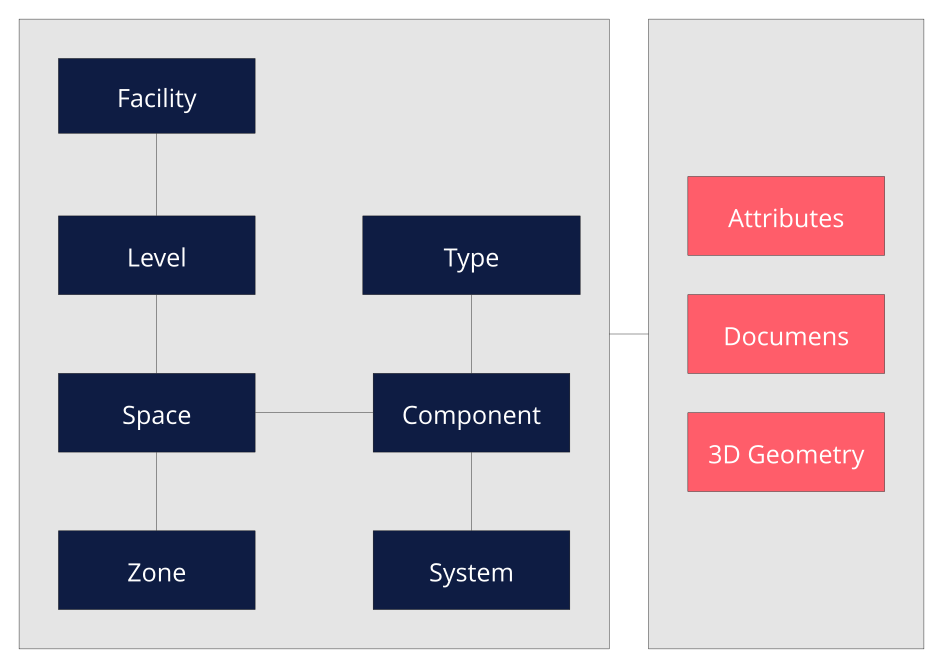Asset Information Model (AIM)
Basic overview of the data model and entity relations
Facility (or a building) is usually divided into horizontal Levels. Levels contain Spaces. Spaces can be grouped into Zones by function, category or other grouping criteria. Everything physical is a Component. This might be a wall, or a boiler. Components can be grouped into Systems - usually by function, but it might also be by category or other grouping criteria. Components might be of the same Type which defines their shared characteristics. For example all walls with the same layer structure might be of the same Type. Or, many doors might be of the same Type if they have the same shape, width, height and other characteristics. Components might have 3D visual representation. Components might be connected to each other. All entities can have Attributes assigned. Attributes are flexible and may follow certain predefined schemas, but often they are created ad-hoc in authoring tools. All entities can have Documents assigned for any purpose.

There are a few more entities in the AIM, but these are essential to understand the scope and extent of the domain.
Updated about 1 month ago
